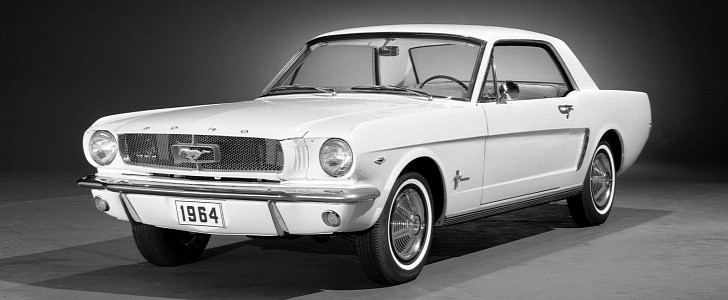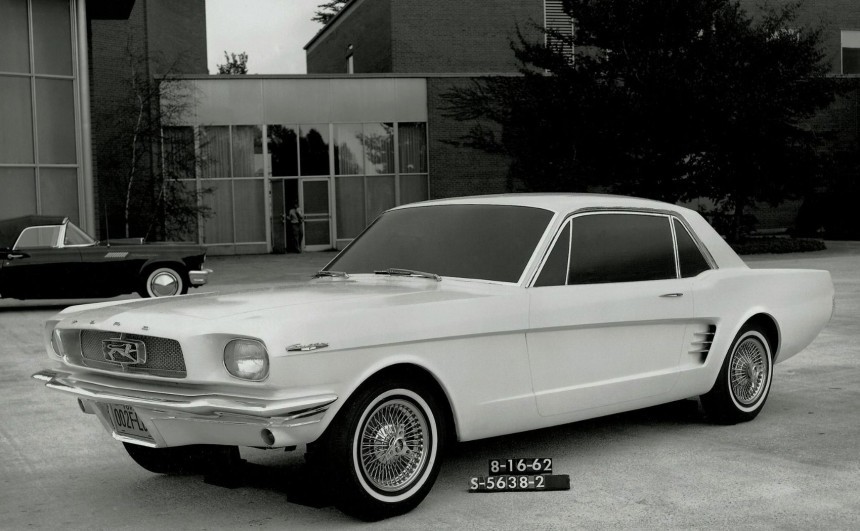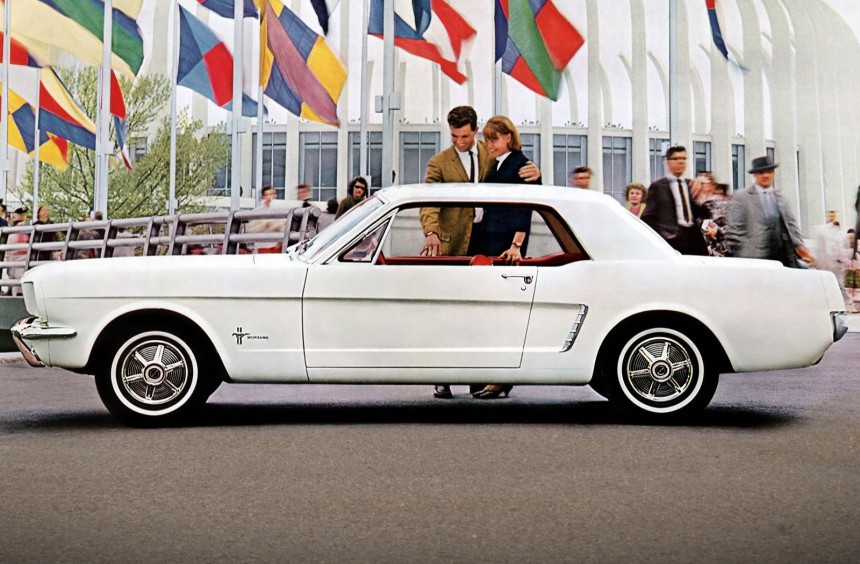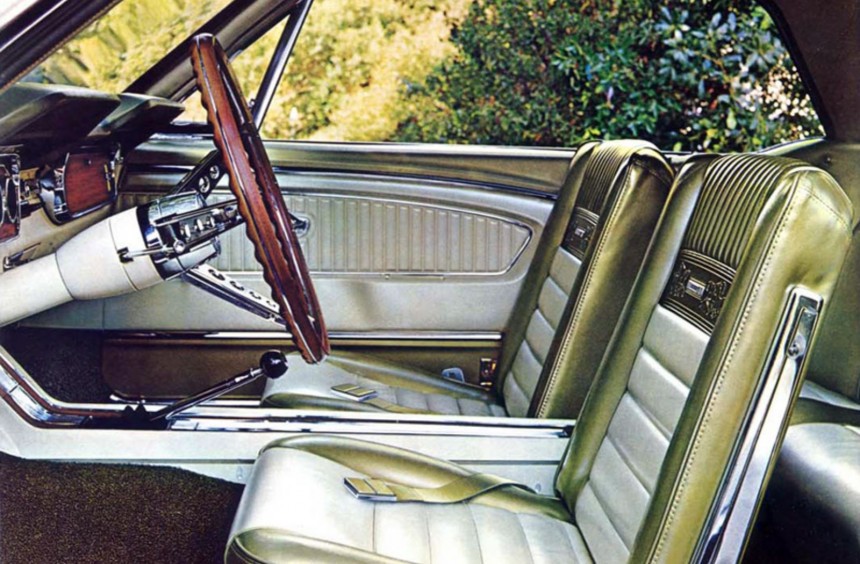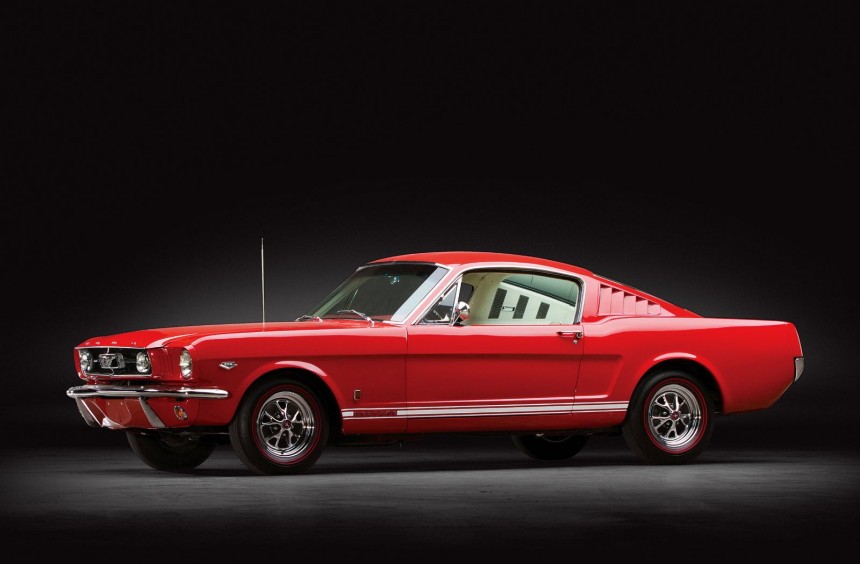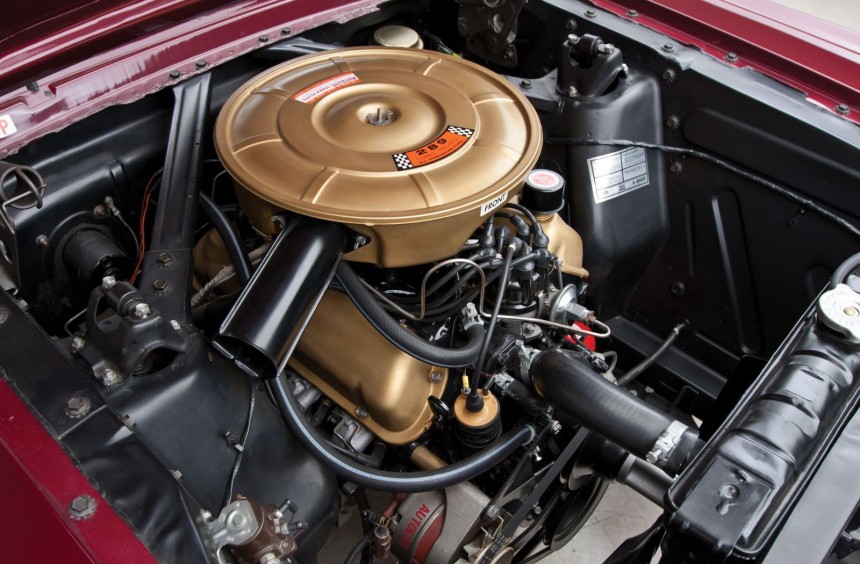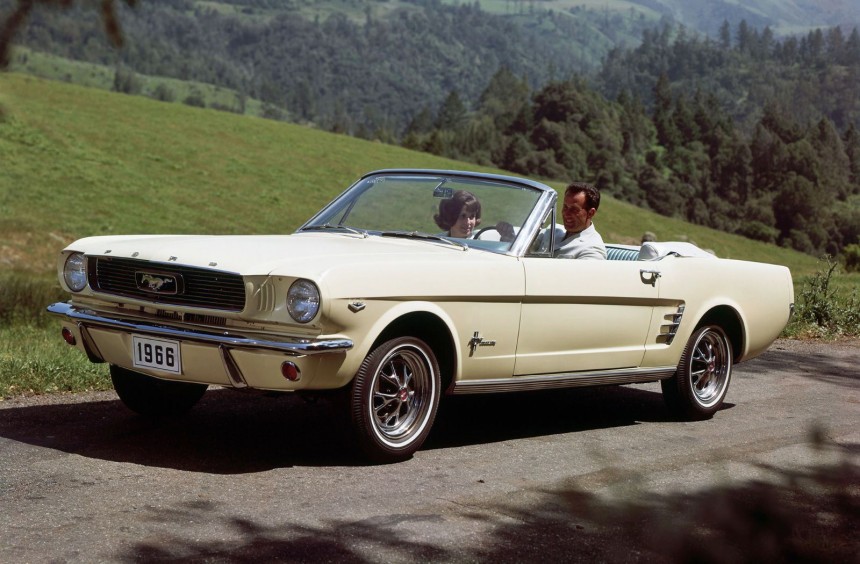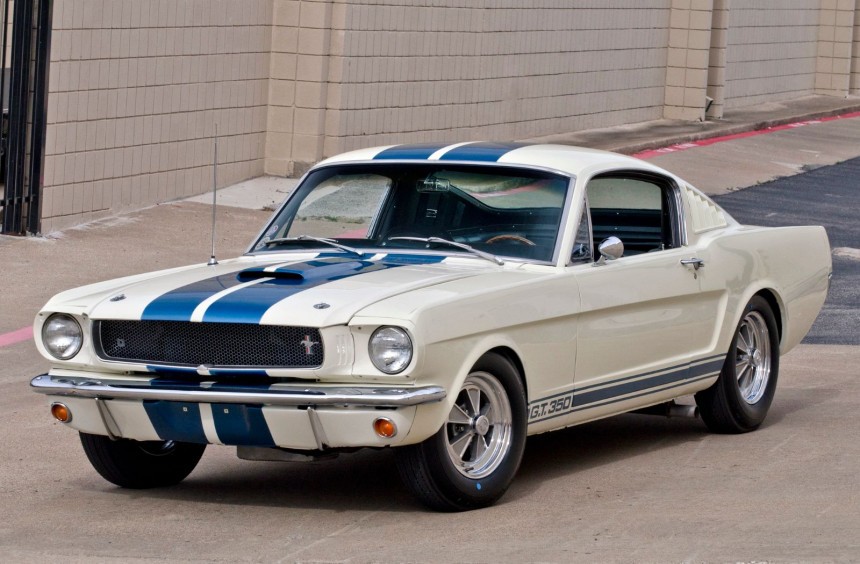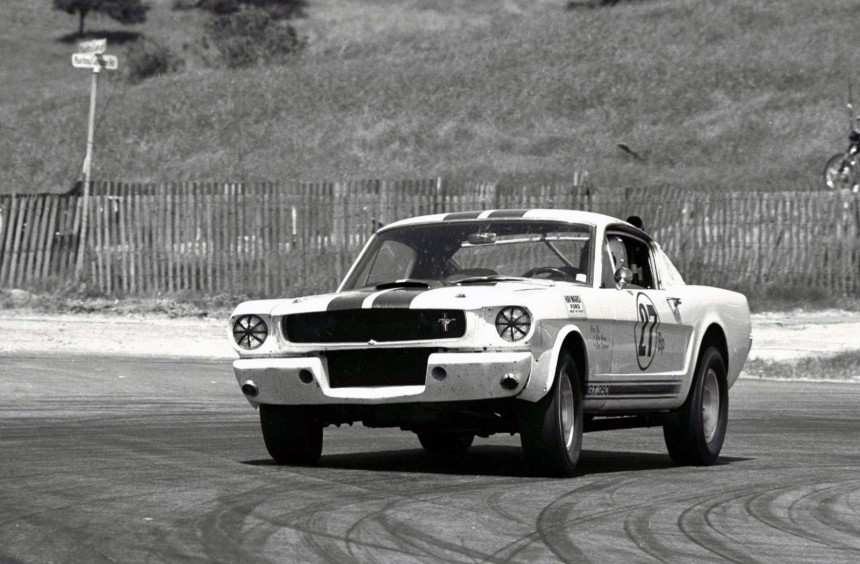As part of our Mustang month, the series dedicated to the iconic nameplate continues with an extensive overview of the first-generation pony car. This article focuses on the development process and examines the first three production runs built from 1964 to 1966.
By the end of 1962, everybody was talking about the Mustang thanks to the mind-blowing, race car-inspired concept revealed in October that year. Although Ford had no intention of manufacturing it on a large scale, it successfully paved the way for a new breed of cars.
The company wanted to revitalize its model lineup by introducing an affordable compact sports car that would appeal to men and women of all ages. It would do that by being sporty enough for the younger generations, spacious enough for a family of four, and offer an unprecedented variety of optional features that would surely satisfy everyone.
Ford vice-president and general manager Lee Iacocca had already kickstarted the development of the production version a year before the concept car’s official debut. He named Donald N. Frey head engineer for the project, and tasked Eugene Bordinat to oversee the design.
The latter wanted the new car to resemble the extravagant Ferraris and Maseratis of the era closely, so he commissioned all three of the Blue Oval’s design studios to develop multiple concepts.
Advanced Design presented five, Lincoln-Mercury proposed two, and the Ford studio only submitted one called Cougar, which was ultimately chosen as the go-to design. The people responsible for its creation were project design chief Joe Oros along with L. David Ash, Gale Halderman, and John Foster.
Since affordability and thus low development costs were key goals, the Mustang used chassis, suspension, and drivetrain components derived from two existing Ford models, the Falcon and Fairlane. However, the body was completely new and had a shorter wheelbase, wider track, lower height, and employed an innovative structural system called a “torque box” that significantly improved rigidity.
After a massive advertising campaign that included multiple commercials aired by all three major networks, the Mustang officially launched on April 17, 1964, at the New York World's Fair. It was an instant hit, with an overwhelming number of Americans taking dealerships by storm to buy one.
Available in hardtop coupe or convertible body styles, it looked different than any other car on the market. With a stylish design highlighted by a multitude of chrome accents, it looked as elegant as a European touring car, yet it could be purchased for a starting price of around $2,350.
Inside, it came with a sporty steering wheel, wall-to-wall carpeting, a full headliner, front bucket seats (or an optional front bench), and a rear bench seat that could comfortably seat two.
As standard, it was powered by a U-code 101-hp, 170-cu in (2.8-liter) straight-six shared with the Falcon. To emphasize that this was a sports car, the engine was linked to a three-speed manual transmission with a floor-mounted shifter. For a few extra bucks, customers could upgrade to a four-speed manual or a three-speed Cruise-O-Matic auto.
Those who wanted more power could also replace the standard six-cylinder with one of two optional V8 engines. The first was a 164-hp 260-cu in (4.3-liter) F-code unit, while the second was a larger 289-cu in (4.7-liter) K-code HiPo version. Equipped with a four-barrel carburetor as opposed to the two-barrel version of the 260, it produced 210 hp.
Although it was marketed as a 1965 model, the first production run is now widely referred to as the 1964 ½ series. It was manufactured from March to early August 1964 in 121,538 units.
Known as the 1965 series, the second run was produced from late August 1964 to July 1965, totaling 559,451 units. It featured minor design changes to the exterior and introduced a new fastback body style that would become the basis for the legendary Shelby GT350.
For the cabin, Ford offered a new optional deluxe decor package. It featured a five-gauge instrument panel and a woodgrain steering wheel and several other trims made from the same material. The seat covers came with embossed running horses, and the door panels got integrated armrests and pistol grip door handles.
As for the available engines, the standard six-cylinder was replaced with a larger, 200-cu in (3.3-liter) T-code version that upped the power to 120 hp. Moreover, the F-code V8 was discontinued and a new 200-hp C-code 289-cu in (4.7-liter) fitted with a two-barrel carburetor took its place. Next in line was an A-code 225 hp four-barrel unit from the same 289 engine family, while the HiPo soldiered on without any upgrades. These models also came with alternators instead of the outdated DC generators fitted to the initial series.
In April 1965, the GT Equipment Package was introduced for Mustangs equipped with one of the two four-barrel engines. For $165, the pack brought grill-mounted fog lights, GT badges, a GT gas cap, rocker-panel stripes, disc brakes, and a dual exhaust system.
It also offered all the goodies included in the optional handling package, which consisted of increased rate springs, heavy-duty shocks, a quicker steering ratio, and a larger diameter front stabilizer bar.
For the 1966 model year, Ford was struggling to keep up with the high demand, so other than a redesigned front grille, wheel covers, gas cap, and a slightly modified hood, there were no major exterior or interior changes.
Unlike the previous two runs, the engine options remained unchanged, with customers able to choose between the standard six-cylinder or one of the three optional V8s.
The third production run began in August 1965 and ended eleven months later, with 607,578 units built during that period.
From 1965 to 1966, Ford commissioned Caroll Shelby to create a high-performance version of the Mustang, the GT350. It was powered by the HiPo K-Code V8 that was upgraded with a large four-barrel Holley 715 CFM carburetor, high-riser manifolds, and Tri-Y headers which increased the output to 306 hp.
The standard manual transmission was replaced by a performance-rated Borg-Warner four-speed unit, while stopping power was provided by a Kelsey-Hayes braking system. Moreover, the suspension system featured unequal arms, coil springs, and an anti-sway bar up front, with a live axle, multi-leaf springs, and tube shocks in the back.
These upgrades didn’t just improve performance but dramatically changed the handling dynamics, and the GT350 became the go-to track weapon for many enthusiasts.
To take things even further, Shelby American produced 34 race-spec variants in 1965. The GT350R was 75 pounds (34 kg) lighter than the standard version, developed 350 hp, and featured super-duty suspension along with an enlarged fuel tank.
Unlike its affordable, mass-produced counterparts, the Shelby GT350 retailed for $4,584 in 1965, over $1,000 above a standard 289 fastback. That year, only 562 cars were built, but in 1966, Ford ramped up production to 2,378 units.
To this day, the 1965-1966 GT350s are considered some of the best sports cars ever built on American soil, and surviving models are highly collectible, fetching well over $100,000 at auctions.
Still, the Shelby GT350 wouldn't have existed if it weren’t for the revolutionary first-generation Mustang, which gave birth to the pony car segment and the other famous cars that arrived to rival the Mustang, including the Plymouth Barracuda and the Chevrolet Camaro.
The company wanted to revitalize its model lineup by introducing an affordable compact sports car that would appeal to men and women of all ages. It would do that by being sporty enough for the younger generations, spacious enough for a family of four, and offer an unprecedented variety of optional features that would surely satisfy everyone.
Ford vice-president and general manager Lee Iacocca had already kickstarted the development of the production version a year before the concept car’s official debut. He named Donald N. Frey head engineer for the project, and tasked Eugene Bordinat to oversee the design.
Advanced Design presented five, Lincoln-Mercury proposed two, and the Ford studio only submitted one called Cougar, which was ultimately chosen as the go-to design. The people responsible for its creation were project design chief Joe Oros along with L. David Ash, Gale Halderman, and John Foster.
Since affordability and thus low development costs were key goals, the Mustang used chassis, suspension, and drivetrain components derived from two existing Ford models, the Falcon and Fairlane. However, the body was completely new and had a shorter wheelbase, wider track, lower height, and employed an innovative structural system called a “torque box” that significantly improved rigidity.
The First Production Run
Available in hardtop coupe or convertible body styles, it looked different than any other car on the market. With a stylish design highlighted by a multitude of chrome accents, it looked as elegant as a European touring car, yet it could be purchased for a starting price of around $2,350.
Inside, it came with a sporty steering wheel, wall-to-wall carpeting, a full headliner, front bucket seats (or an optional front bench), and a rear bench seat that could comfortably seat two.
Those who wanted more power could also replace the standard six-cylinder with one of two optional V8 engines. The first was a 164-hp 260-cu in (4.3-liter) F-code unit, while the second was a larger 289-cu in (4.7-liter) K-code HiPo version. Equipped with a four-barrel carburetor as opposed to the two-barrel version of the 260, it produced 210 hp.
Although it was marketed as a 1965 model, the first production run is now widely referred to as the 1964 ½ series. It was manufactured from March to early August 1964 in 121,538 units.
The Second Production Run
For the cabin, Ford offered a new optional deluxe decor package. It featured a five-gauge instrument panel and a woodgrain steering wheel and several other trims made from the same material. The seat covers came with embossed running horses, and the door panels got integrated armrests and pistol grip door handles.
In April 1965, the GT Equipment Package was introduced for Mustangs equipped with one of the two four-barrel engines. For $165, the pack brought grill-mounted fog lights, GT badges, a GT gas cap, rocker-panel stripes, disc brakes, and a dual exhaust system.
It also offered all the goodies included in the optional handling package, which consisted of increased rate springs, heavy-duty shocks, a quicker steering ratio, and a larger diameter front stabilizer bar.
The Third Production Run
Unlike the previous two runs, the engine options remained unchanged, with customers able to choose between the standard six-cylinder or one of the three optional V8s.
The third production run began in August 1965 and ended eleven months later, with 607,578 units built during that period.
The Shelby GT350
The standard manual transmission was replaced by a performance-rated Borg-Warner four-speed unit, while stopping power was provided by a Kelsey-Hayes braking system. Moreover, the suspension system featured unequal arms, coil springs, and an anti-sway bar up front, with a live axle, multi-leaf springs, and tube shocks in the back.
These upgrades didn’t just improve performance but dramatically changed the handling dynamics, and the GT350 became the go-to track weapon for many enthusiasts.
Unlike its affordable, mass-produced counterparts, the Shelby GT350 retailed for $4,584 in 1965, over $1,000 above a standard 289 fastback. That year, only 562 cars were built, but in 1966, Ford ramped up production to 2,378 units.
To this day, the 1965-1966 GT350s are considered some of the best sports cars ever built on American soil, and surviving models are highly collectible, fetching well over $100,000 at auctions.
Still, the Shelby GT350 wouldn't have existed if it weren’t for the revolutionary first-generation Mustang, which gave birth to the pony car segment and the other famous cars that arrived to rival the Mustang, including the Plymouth Barracuda and the Chevrolet Camaro.
